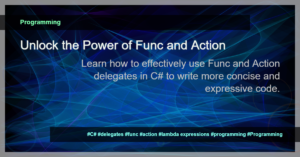Heading 1: Introduction to C# Interview Questions
Coding in C# is a fundamental skill for any aspiring software developer. Whether you’re a seasoned professional or just starting your programming journey, it’s essential to be well-prepared for a C# interview. In this article, we’ve compiled a list of commonly asked interview questions and provided detailed answers to help you ace your interview.
Heading 2: Basic C# Concepts
- What is C#?
C# is a general-purpose, object-oriented programming language developed by Microsoft. It is widely used for building various types of applications, including desktop, web, and mobile applications. - What are the key features of C#?
Some of the key features of C# include:
- Object-oriented programming (OOP)
- Automatic memory management (garbage collection)
- Type safety and strong typing
- Language interoperability
- Asynchronous programming using async/await
- LINQ (Language Integrated Query)
Heading 2: Data Types and Variables
- What are the different data types in C#?
C# supports various data types, including:
- Numeric types (e.g., int, float, double)
- Boolean type (bool)
- Character type (char)
- String type (string)
- Array types
- Enumerations (enum)
- Explain the difference between value types and reference types in C#.
Value types hold their data directly in memory, while reference types hold references to their data. Value types include primitive types like int, float, etc., while reference types include objects, strings, and arrays.
Heading 2: Control Structures and Loops
- What are the control structures available in C#?
C# provides several control structures, including:
- if-else statements
- switch statements
- while and do-while loops
- for and foreach loops
- How do you break out of a loop in C#?
To break out of a loop, you can use the “break” keyword. It terminates the loop execution and transfers control to the next statement after the loop.
Heading 2: Object-Oriented Programming (OOP)
- What are the pillars of object-oriented programming?
The pillars of OOP include:
- Encapsulation: bundling data and methods together in a single unit (class)
- Inheritance: creating new classes by extending existing ones
- Polymorphism: using a single interface to represent different types
- Abstraction: representing essential features without including unnecessary details
- Explain the concept of inheritance in C#.
In C#, inheritance allows us to create a new class (derived class) based on an existing class (base class). The derived class inherits all the fields and methods from the base class and can also add additional functionality.
Heading 2: Error Handling and Exception Handling
- How do you handle exceptions in C#?
C# provides a built-in exception handling mechanism through try-catch blocks. You can enclose the code that may throw exceptions in a try block and catch the exceptions in one or more catch blocks. What is the difference between throw and throw ex in C#?
When an exception is thrown using “throw ex”, it resets the stack trace of the exception, making it difficult to trace the origin of the exception. It is recommended to use “throw” alone to preserve the original stack trace.
Heading 2: Conclusion
By familiarizing yourself with these common C# interview questions and understanding their answers, you’ll be well-prepared to tackle any C# interview. Remember to practice coding examples and review key concepts to reinforce your knowledge. Good luck with your interview!
Note: Please note that the code examples provided in this article are for illustrative purposes and may not be complete implementations. Ensure to test and modify the code as per your requirements.
This article is also available on my blog: [Link to your blog post]
Please remember to check out other useful content and tutorials for C# and other programming languages on my blog.



